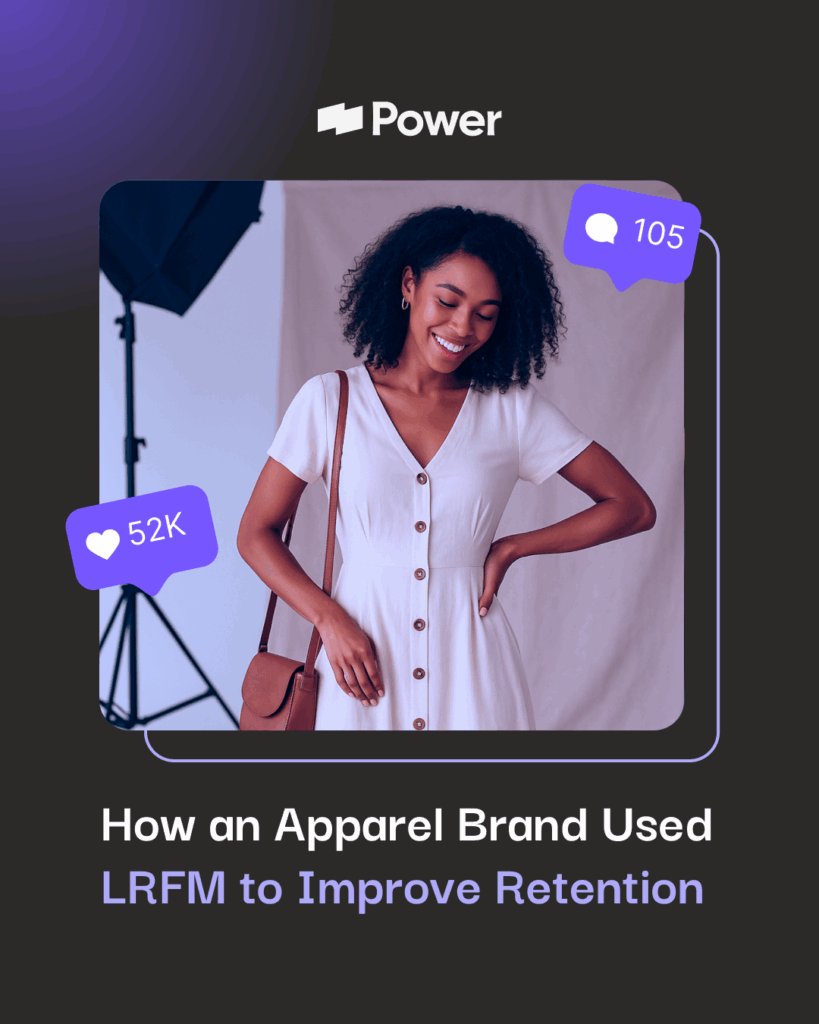Rethinking Your Remarketing Strategy

The average American is exposed to anywhere between 4,000 to 10,000 advertisements a day. As the world grows increasingly digital and social media continues to rise in popularity, the opportunities to place advertisements and bring customers into the funnel increase.
But the question remains—is your business’ remarketing strategy effectively leading customers down the funnel and past the purchase finish line?
What is Remarketing?
What is remarketing? Also known as behavioral targeting, is a way to reconnect with people who have previously interacted with your website or mobile app. It can serve two very important marketing purposes:
- Increase brand awareness among an audience who is interested, whether tangentially or actively
- Remind audiences who have shown active interest to make a purchase
Utilized on platforms such as Google and Facebook, remarketing tags sites and content that users visit and then creates advertisements based on their searches and views. It’s the reason why after looking up “toaster,” you suddenly have several advertisements for different brands of toasters.
Why Remarket?
As the amount of information we intake each day increases, a personalized experience is becoming more and more important. According to Epsilon:
“The appeal for personalization is high, with 80% of respondents indicating they are more likely to do business with a company if it offers personalized experiences and 90% indicating that they find personalization appealing.”
But personalized experiences are not just drawing customers to businesses, but also having an impact on their spending habits.
- Consumers who find personalized experiences appealing are ten times more likely to be a brand’s “most valuable customer,” or those who are expected to make more than 15 purchases a year.
- They are also shopping more frequently — people who believe that companies are providing personalized experiences shop more than three times more frequently than those who do not.
Remarketing is, at its essence, the personalization of marketing and advertising. If executed correctly, it can effectively boost your brand awareness, increase the input of audiences into the funnel, and help onboard more potential customers.
Remarketing is an important part of the modern marketing strategy. However, not all remarketing is equally effective.
Is Your Remarketing Working?
If you feel that your remarketing is not effective, chances are that your remarketing window is too short. In order to craft the most successful remarketing campaign, it is important to look at the average life cycle of a customer’s journey.
50% of people who walk into a store and research a product end up buying that product in the next 2 years.
Two years is longer than most remarketing strategy timelines. And while the purchase might not be from the source they originally saw it, 50% of those customers do end up making the purchase. This buying tendency makes in-market audiences extremely valuable. Additionally:
15% of the previously mentioned 50% will make their purchase in the next 90 days.
These percentages can get a little bit confusing, so let’s put it in terms of people. If 200 people walk into a store to look at refrigerators, within 90 days 15 of them will have purchased a new refrigerator. Within two years, 100 of that original 200 will be bickering over whether or not bananas belong in their new refrigerator; half of the original number will own one.
But what does this mean, exactly? See below:
- 92.5% of your potential customers—the ones who are clicking through your site and browsing through your store—are going to be lost.
- If you aren’t talking to your potential customers during that 90-day window, someone else is. And they’ll probably make their purchase elsewhere.
These two facts provide a few key takeaways:
- Most of the eyes on your site and the people in your stores are not going to convert into purchases. This makes targeting your advertisements even more crucial—why spend money on eyes that won’t end up in a purchase?
- There are two major timelines to keep track of when designing a remarketing campaign: the 90-day conversion and the two-year conversion. The approach to both should look different.
When considering how to best remarket to your audiences, it’s important to ask yourself the difficult questions: is it worth remarketing to someone for 90 days? How do you best allocate your budget to account for different stages of customer drop-off? How do I remarket to someone effectively for 90 days?
How to Effectively Remarket To Your Audiences
Keep your message fresh. Currently, there’s an oversaturation of messaging and advertising on various different platforms and mediums. Now that we’re experiencing extreme digitization, we all know what it’s like to be marketed to. It happens to us every day. By staying fresh, unique, and authentic, you’re better able to differentiate yourself from your competition.
Let’s consider someone who is looking at baby carriages. It’s safe to assume that they are in the planning stages—they are actively looking for, researching, and comparing different kinds of baby carriages.
How do you remarket to them?
Assuming that they are looking to buy in the next 90 days, you can do the following:
- Send them a “Come back!” message
- Remind them of your brand and product’s unique value propositions and differentiators.
- Reach out with a final “But before we say goodbye for real, here’s a sweet discount” option. One last incentive to entice them.
If they’re not yet ready to purchase, the strategy can look a little more like this:
- Put the customer into the first funnel.
- Leave them alone—exclude them from messaging.
- After a while has passed, pop up and remind them with a revitalizing message that if they haven’t made a purchase yet, your brand and product is the one for them!
The trick here is to build relationships with your customers instead of inundating them with the same messaging over and over again. According to Mailchimp:
“One survey found that about 75% of consumers noticed that they were being retargeted. But more importantly, people respond to them. According to a personalized retargeting company, the average click-through rate for a Google search ad is 0.07%, while the average rate for retargeted ads is 0.7%. Not only that, users who click through are 70% more likely to convert and become customers.”
Although it’s more work, remarketing ultimately develops better brand and product loyalty without fatiguing your audience—in turn helping you sell more. These timelines are most effective with strong, fresh messaging.
Who Does Remarketing Work For?
Keep in mind that remarketing isn’t for everyone. If you’re only selling one or two products or if your product/service is relatively cheap, the cost of remarketing always needs to be considered. If the cost outweighs the return or takes a bite out of your profit margin, then this tactic might not complement your business.
With that said, remarketing is a great strategy for brands who:
- Have enough variety of products to upsell and cross-sell after the first purchase. These are brands that have both a large portfolio of services/products to sell and high customer loyalty. For example, these kinds of businesses can be clothing brands, makeup sites, etc.
- Sell high-ticket items or provide services that require a longer consideration phase. Remarketing is effective for services like wealth management, because it’s a commitment to choose a consultant, and the price tag and investment on the end of the customer are much larger. Businesses like big mattress brands also benefit from remarketing because their product is an investment.
- Sell products that require proprietary support and ancillary items that result in a long customer relationship and higher lifetime value. With companies that sell subscription-based services, building strong customer relationships is important because while the onboarding cost may be higher, each of the customers has a higher lifetime value (rather than one-off purchases)
When the lifetime value of a customer outweighs the acquisition cost, remarketing is a fantastic strategy.
A Final Thought
Remarketing, in the beginning, requires trial and error. Crafting messages that are simultaneously broad enough to reach a wider audience and specific enough to provide a personalized experience is nothing short of an art form. Iteration after iteration, you will eventually find a purchase. And when you do, remarketing just might be one of your businesses’ secret weapons.
When building your remarketing strategy, be sure to consider the following:
Ad frequency at each point of the funnel:
- Are the message refreshes spread far enough apart?
- At which stages in the customer’s journey are more frequent messages effective? Less effective?
- How do you craft messages that address each customer’s place in the funnel while also maintaining the integrity of the brand?
Messaging and branding that addresses the need:
- By looking at CTRs, ad scores and engagement scores, you can tell whether your messaging is effective—are you studying the metrics?
- What does brand loyalty look like?
- Is this boosting overall positive sentiment towards the brand? Towards the product?
With these in mind, you’re on your way to building a successful remarketing strategy that will help you optimize your funnel and drive further revenue.
Sources:
- Mail Chimp. Google Remarketing.
- https://mailchimp.com/marketing-glossary/google-remarketing/
- Social Media Examiner. November 15 podcast: “Facebook Ads Strategy: A New Approach for a Competitive Marketplace.
- https://www.socialmediaexaminer.com/shows/
Our Editorial Standards
Reviewed for Accuracy
Every piece is fact-checked for precision.
Up-to-Date Research
We reflect the latest trends and insights.
Credible References
Backed by trusted industry sources.
Actionable & Insight-Driven
Strategic takeaways for real results.






